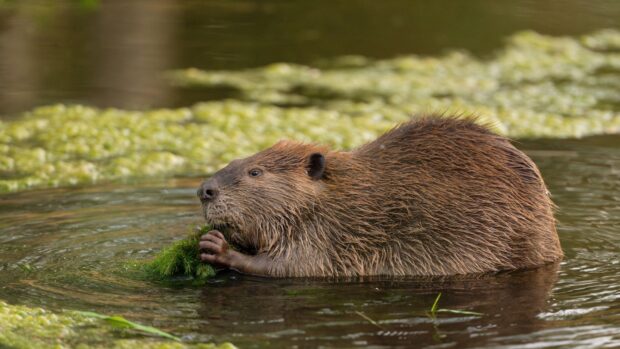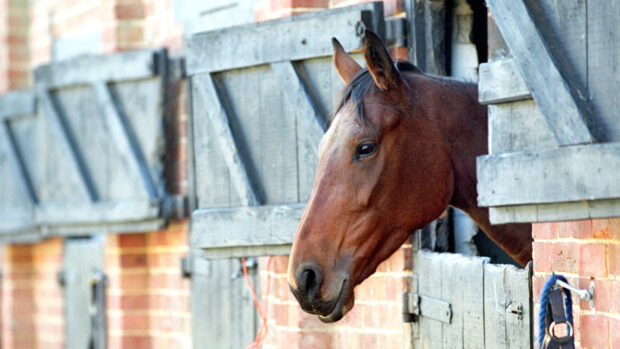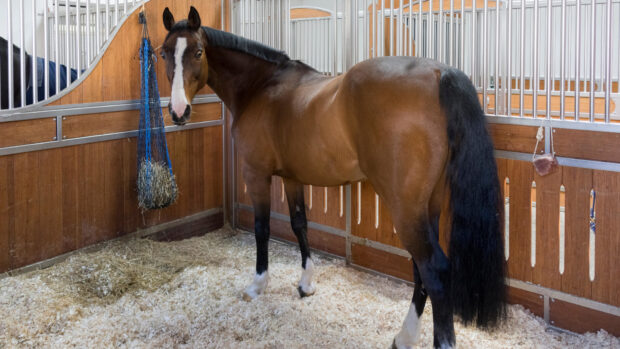New research has found more evidence to suggest crib-biting could be a way of soothing stress — and may inform research into human mental health.
Crib-biting — where a horse grabs hold of a solid object such as a stable door with his incisors and inhales, making a grunting noise — is considered a vice among horse owners.
Researchers from the Royal Agricultural University (RAU) and Aberystwyth University found neurological differences in horses who cribbed compared to those who did not.
They focused on a key part of the brain, the striatum, which receives dopamine. Dopamine functions as a neurotransmitter and is involved in reward, motivation and memory, among other things.
“We discovered some widespread neurological differences in horses who performed crib-biting behaviour,” said RAU’s Andrew Hemmings.
“The clear evidence of ‘neural sensitisation’ detailed in the research paper suggests that the performance of the food-motivated grasping behaviour might have self-stimulatory or rewarding consequences for the horse.
“On that basis, behaviours such as crib-biting could allow horses to ‘cope’ with stressful situations, in the same manner that humans use rewarding activities or commodities to counter the effects of stress.”
He added the findings “cast doubt” on whether the physical prevention of cribbing is a good idea.
“The presence of this behaviour raises a range of welfare-related questions because these activities normally develop under housing conditions which deprive the animal of food, social interaction and the opportunity to move freely,” he said.
“From a horse management perspective, physical prevention of crib-biting is not advisable as we could be interfering with an important coping strategy, leaving the horse vulnerable to the damaging and performance-reducing effects of stress.
“Rodents acting in this way are sometimes used to model human conditions such as schizophrenia, which are associated with altered function of the brain’s striatum. However, the anatomy of the rodent striatum is very different to that of the human, whereas the horse provides a much closer approximation.
“Therefore, there is potential for equine work such as this to inform future studies into human mental health.”
Continues below…

Are crib-biters better competition horses?
Crib-biters may actually make better competition horses due to changes in their brains and learning habits, according to latest research

Equine America launch an anti-chewing gel
The new gel has been formulated to prevent all types of horses and ponies from chewing stable doors, gates, fences

Neigh Station invented to prevent stable vices
Watching her young children play with their activity centre gave Susan Lyon an idea about how to keep stabled horses
The full paper, titled Causal and functional interpretation of mu- and delta-opioid receptor profiles in mesoaccumbens and nigrostriatal pathways of an oral stereotypy phenotype, has been published in the peer-reviewed journal Behavioural Brain Research.
The research was a collaboration between Dr Hemmings, Dr Sebastian McBride of Aberystwyth University, supported by Dr Matthew Parker of University of Portsmouth and independent equine nutritionist, Catherine Hale.
For all the latest news analysis, competition reports, interviews, features and much more, don’t miss Horse & Hound magazine, on sale every Thursday.




